What Is Soil Vent Pipe | How Does Soil Stack Pipe Works | Soil Vent Pipe Material | Types of Plumbing System
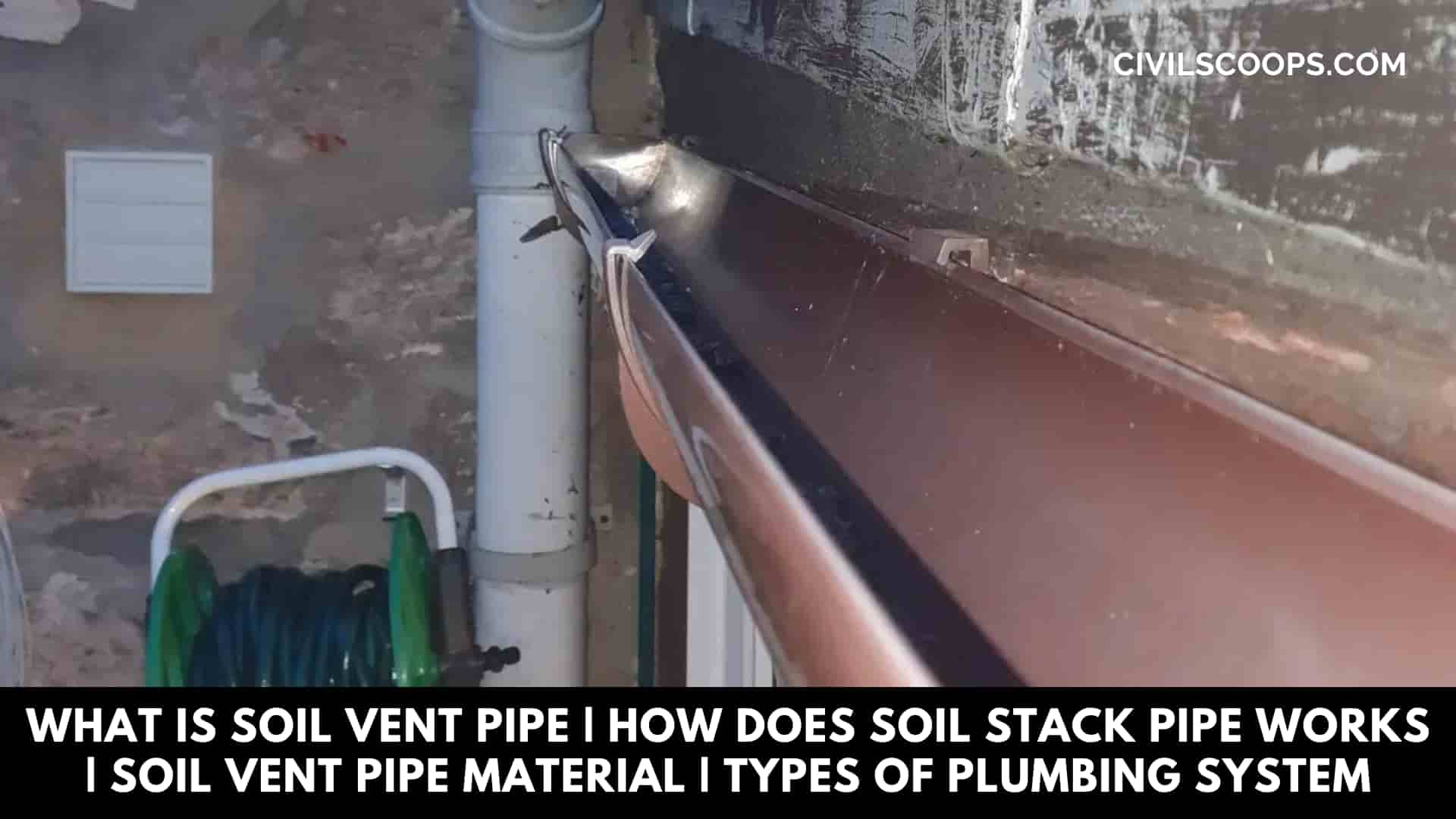
Table of Contents
Introduction of Soil Vent Pipe
- The plumbing system and the Drainage of the important aspect of the building because it helps to drain off the wastewater from the building. The wastewater in the building should be properly removed through the pipes to the septic tanks and sanitary sewer.
- If the proper design and fittings of waste removal pipes are not done, then it may lead to the leakage of foul gases in the working environment of the building.
- In this article, you will get to know what is soil stack, how do the soil vent pipe works and the overview of the plumbing system in the building.
What Is Soil Vent Pipe?
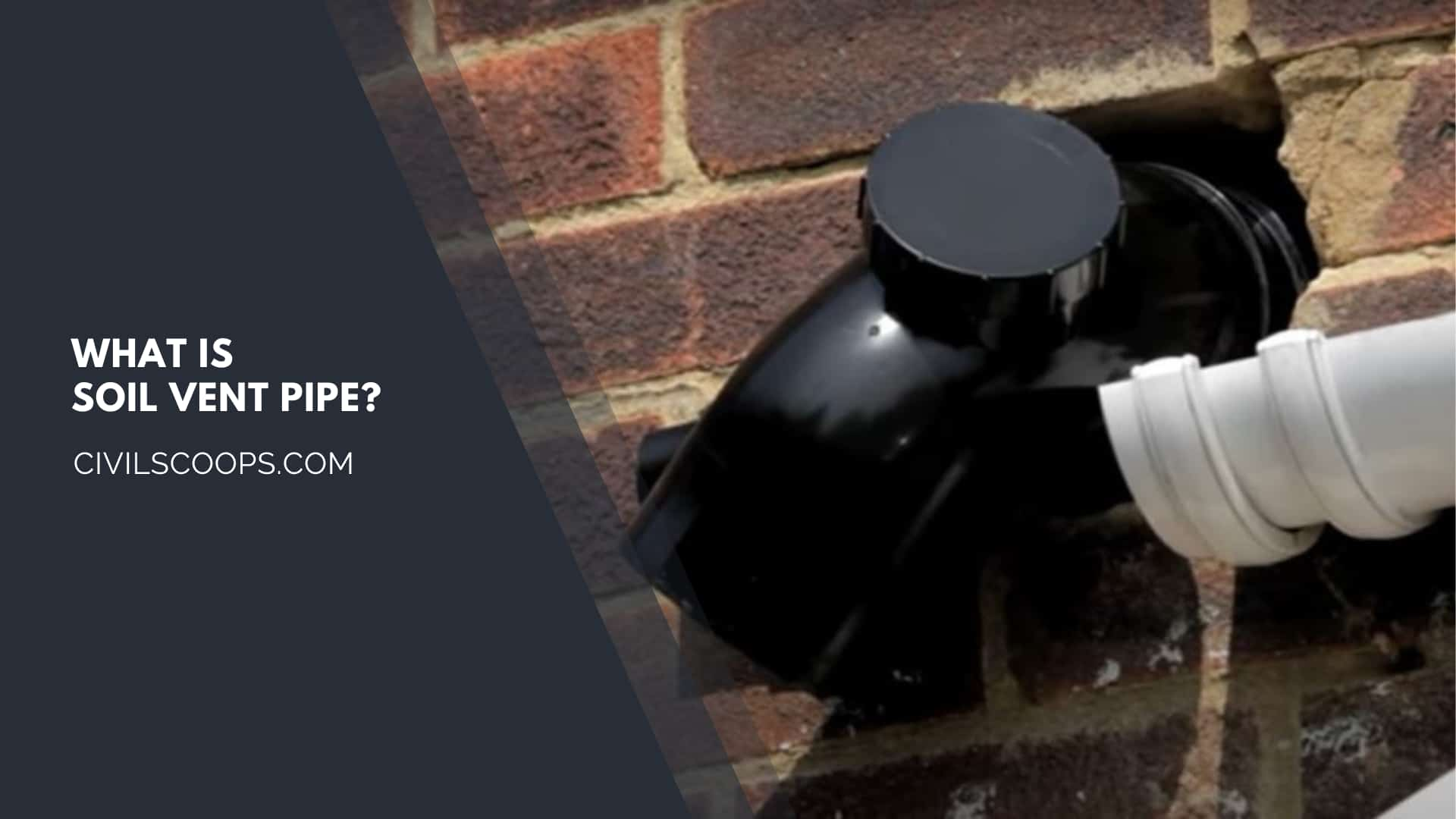
- The soil pipe is a type of pipe which is used to convey the sewage and the wastewater which is generated from the toilet or sink. Soil pipe is also commonly known as a soil vent pipe.
- The function of the soil vent pipe is to convey the wastewater and the solid waste or human excreta to the soil drain or sewers.
- The soil vent pipes are ventilated on the top at a greater height which will help to pass all the gaseous.
- The main purpose of using a soil vent pipe is to regulate the pressure in the drainage system of the building. The SVP meaning in Construction is Soil Vent Pipe.
- It is recommended to use the soil vent pipe with a greater dimension which will prevent the blockages.
- Generally, the 6-inch diameter size soil vent pipes should be used because they are more durable and does not undergo any blockages.
- The waste water pipes had a smaller diameter as compared to the soil pipe because the waste pipes only have to carry the wastewater.
- The soil pipe runs in the vertical direction which starts from the underground drainage system up to the top level of the structure.
How Does Soil Stack Pipe Works?
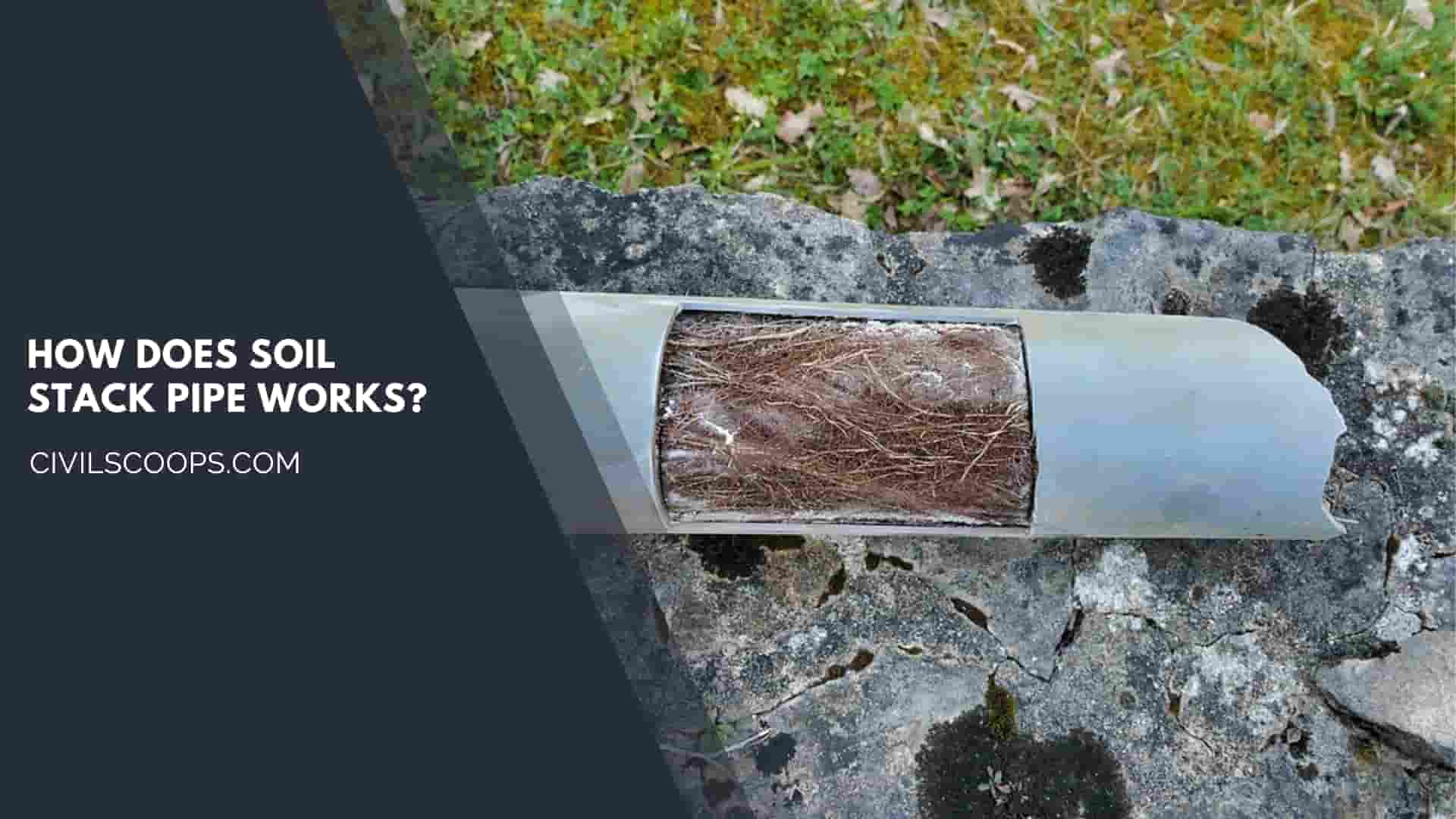
- The main purpose of installation of the soil stack pipe is to convey the wastewater and the waste solids from the toilet and bathrooms and sinks into the underground drainage system.
- The soil stack pipe is vented to pass the bad odour from the wastewater and solids into the atmosphere.
- The soil stack pipe is vented at a greater height so that the bad odour and gases which is generated in the soil pipe will pass in the atmosphere.
- The vent in the soil stack pipe is very important which ensures that drainage system remains at the atmospheric pressure.
- If the soil stack pipe is not vented then the bad odour will enter in the bathroom and toilet through the stack pipe which causes very bad odour.
- There may be chances of blockage of the soil vent pipe because of the nesting Birds. The blockage of the vent pipe creates air pressure inside it.
- It is very necessary that pipes should be protected with the wire or the perforated cap which will help to cover the pipe and prevent any material falling into the pipe.
Soil Vent Pipe Material
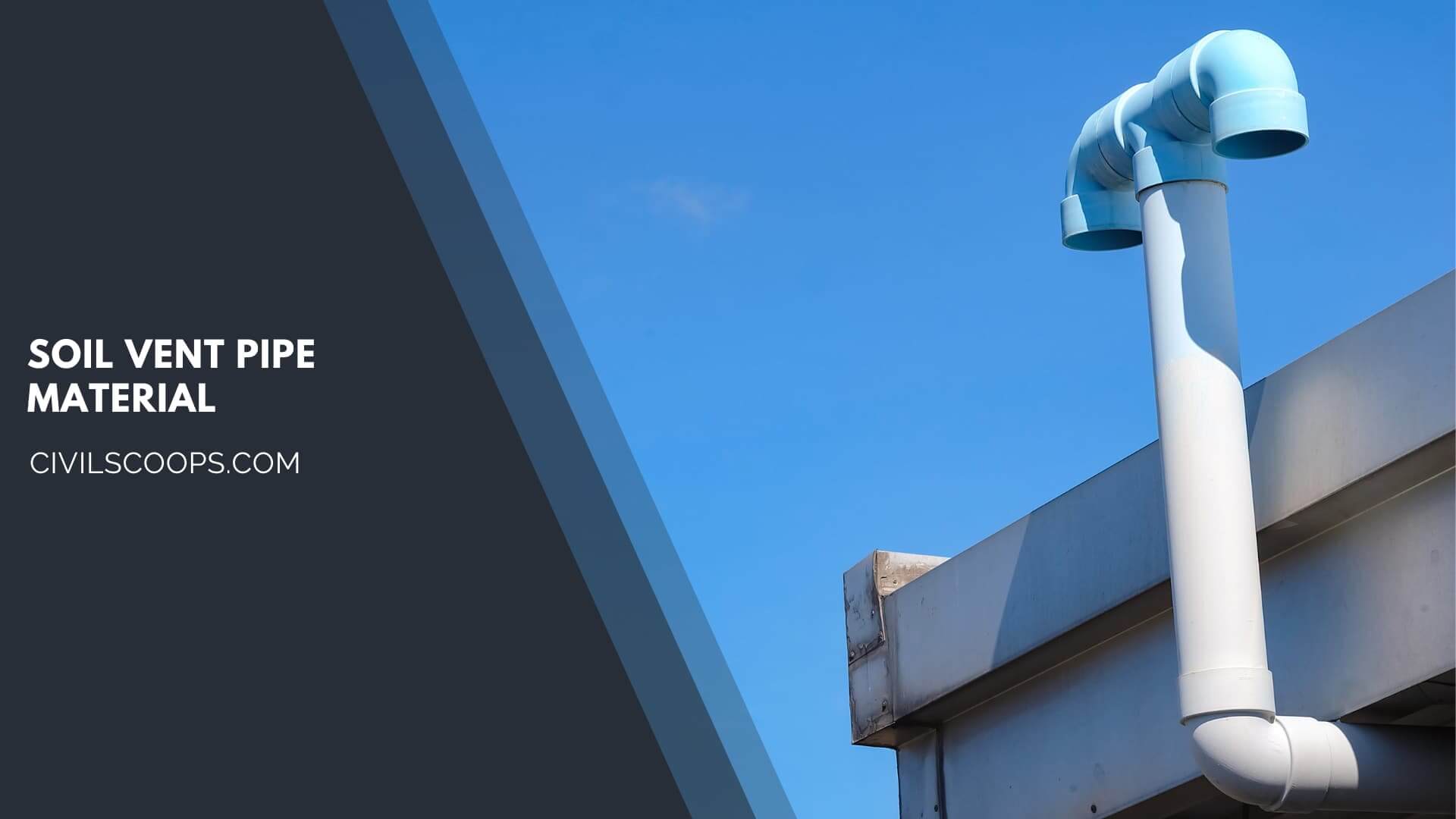
- The soil vent pipe is made from the materials like cast iron and the asbestos. Cast iron is an old method which is used for the fitting of a soil stack.
- The cast iron soil vent pipes are very strong but it is necessary to maintain it because it may undergo rust or corrosion.
- The cast-iron pipes are used in the olden days but nowadays soil pipes are made from the plastic.
- The soil pipes which are made up of UPVC are widely used in the residential drainage system because of its high durability and resistance. UPVC pipes are also economical which is best for your budget.
- UPVC pipes are lighter as compared to the conventional metal pipes.
Internal Soil Pipe Vent Regulations
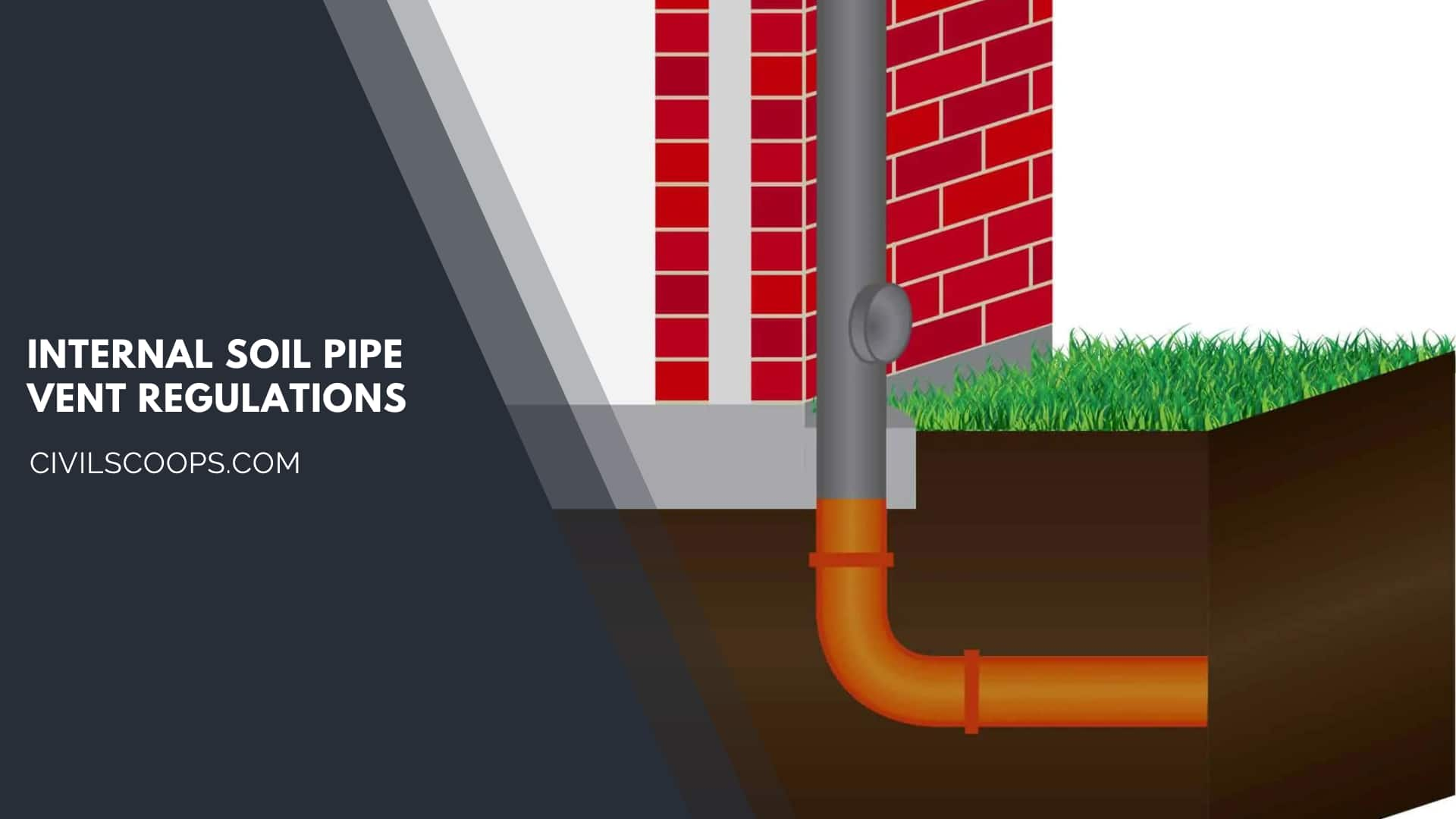
- The position of the vent in the soil pipe is controlled and given as per the building regulations.
- It is very important to provide the vent at a particular height so that all the bad odour and the gases can escape from the pipe into the atmosphere without causing any nuisance to the occupiers and the neighbours.
- The Building Regulations state that the opening of the ventilating pipe should be located at least the height of 900 mm above any window in the structures that is within the distance of 3 metres of the pipe.
- It is also necessary to regularly maintain the soil vent pipe for its efficient working condition.
Types of Plumbing System
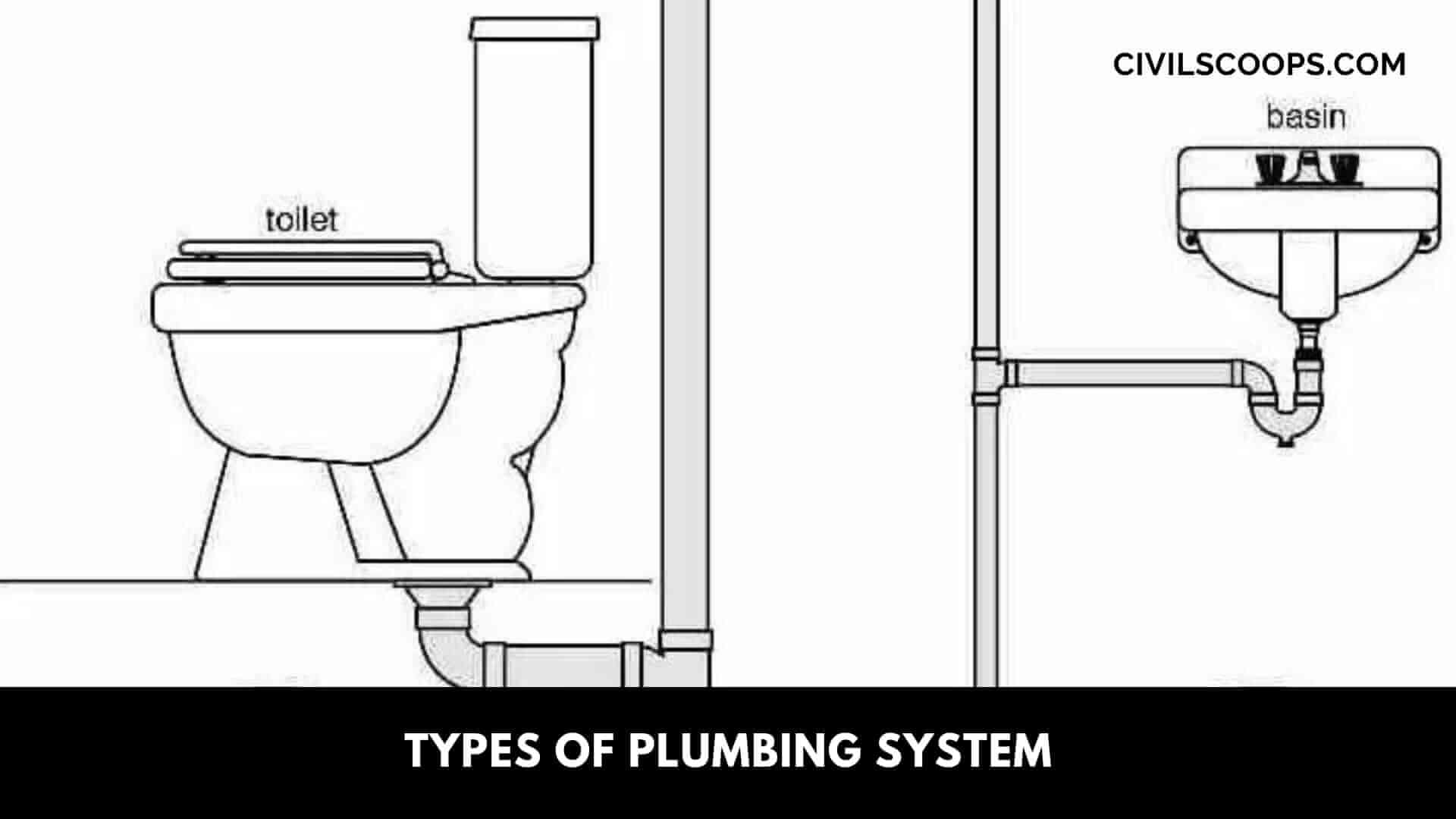
The plumbing system of the structure is categorised into mainly for types which are adopted in the plumbing of the drainage work of the building.
- Single stack system
- One pipe system
- One pipe system partially ventilated
- Two pipe system
1. Single Stack System
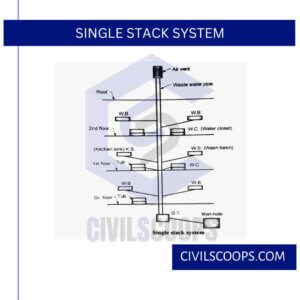
- In case of the single stack system, there is a single vertical soil pipe which is fixed and all the waste matter comes from the kitchen bath and water closet is discharged into it.
- There is the single pipe in this system which also act as a vent pipe. In this pipe system, there is a year event is provided at the top of the pipe.
- The single stack system is economical but the effectiveness of the system depends upon the water seal.
2. One Pipe System
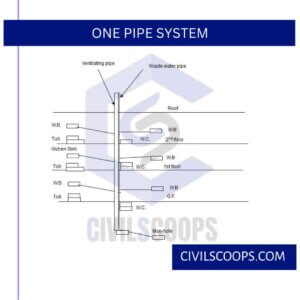
- In the one-pipe system, there is a separate vent pipe which is provided in addition to the waste collection pipe.
- The one-pipe system is more effective as compared to the singles stack system. The separate vent pipe provides ventilation to the water seals of all the traps.
- In this system there is one soil pipe is provided from which all the waste matter from the bath, sink and water closets etc are discharge in the pipe.
3. One Pipe System Partially Ventilated
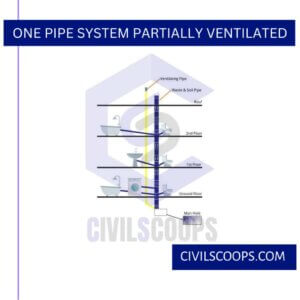
- In the one-pipe system partially ventilated there is an intermediate arrangement is provided between the one-pipe system and the single stack system.
- In this system also there is only one soil pipe is provided through which all the waste matter from the water closets bath and sink are discharged into this pipe.
- The windpipe is also provided for ventilation to the traps of the water closets.
4. Two Pipe System
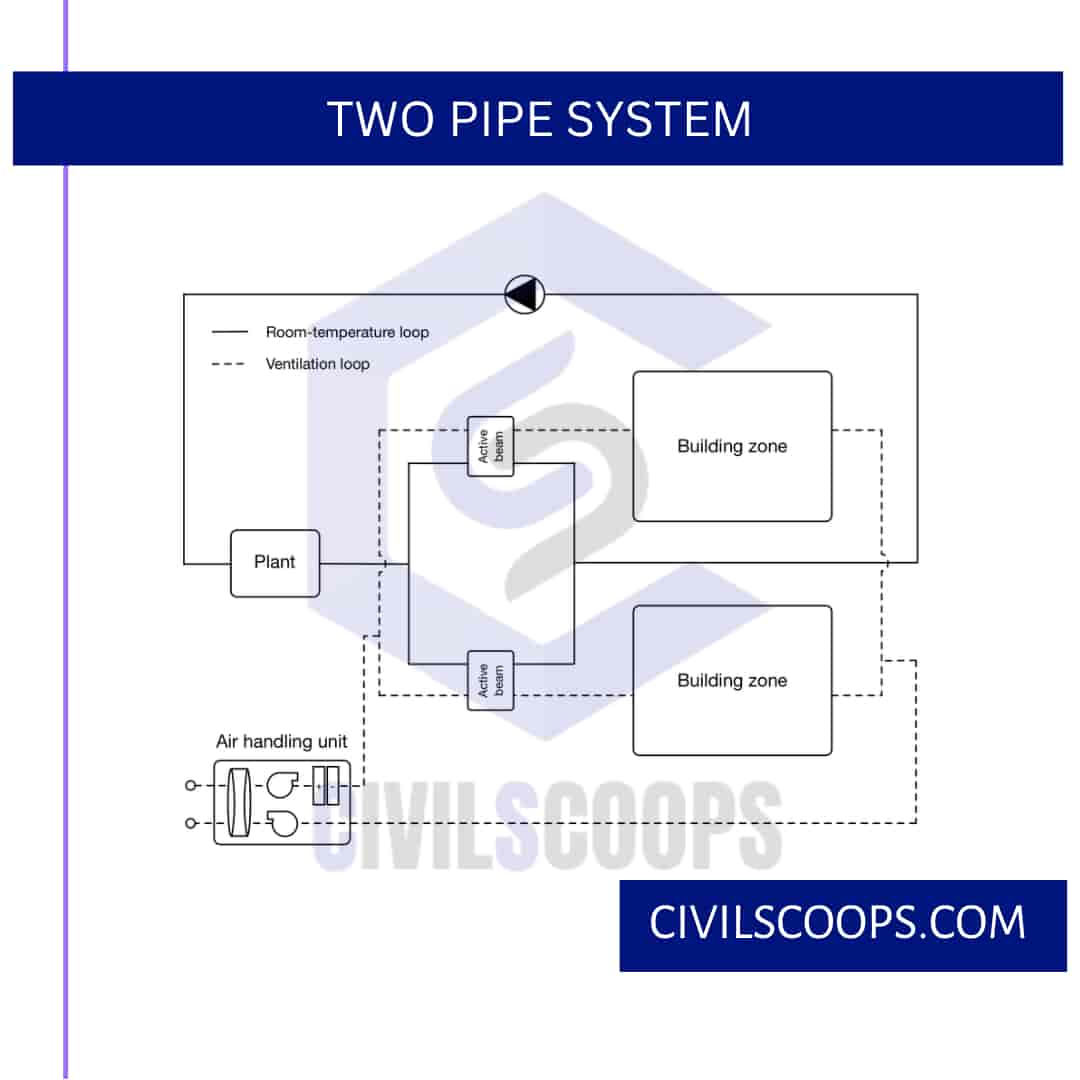
- In the two-pipe system, there are two sets of pipes are used in which the one pipe is soil pipe which is connected to the soil fixtures such as urinals and water closets.
- The second pipe is best to water pipe which is used to collect the wastewater from the bath and kitchen.
- In the two-pipe system, the soil Pipe and waste pipe both are provided with the separate vent pipes.
- There is total for pipes that are required in the two-pipe system.
- The two-pipe plumbing system is more expensive as compared to other types of plumbing system because there are a total of four pipes are required in this plumbing system.
Soil Vent Pipe Design

- The size of the soil vent pipe is determined from the total length of the pipe and the total number of fixtures units which are connected to the pipe.
- The area which is to be served by the drainage system should be divided into different types of zones.
- The two-pipe plumbing system is better as compared to other types of plumbing system because the two-pipe system is efficient for the conveyance of sanitary waste with the minimum risk.
- The one-pipe system has the more economical layout of pipes but it required sufficient to safeguard and proper ventilation.
- Nowadays the commonly used plumbing systems are partially ventilated one pipe system and the single stack system.
- In case of the High Rise buildings, the partially ventilated one pipe system is preferred because the windpipe is connected to the soil pipe appliances at each or alternate.
Factors Affecting Soil Vent Pipe Design
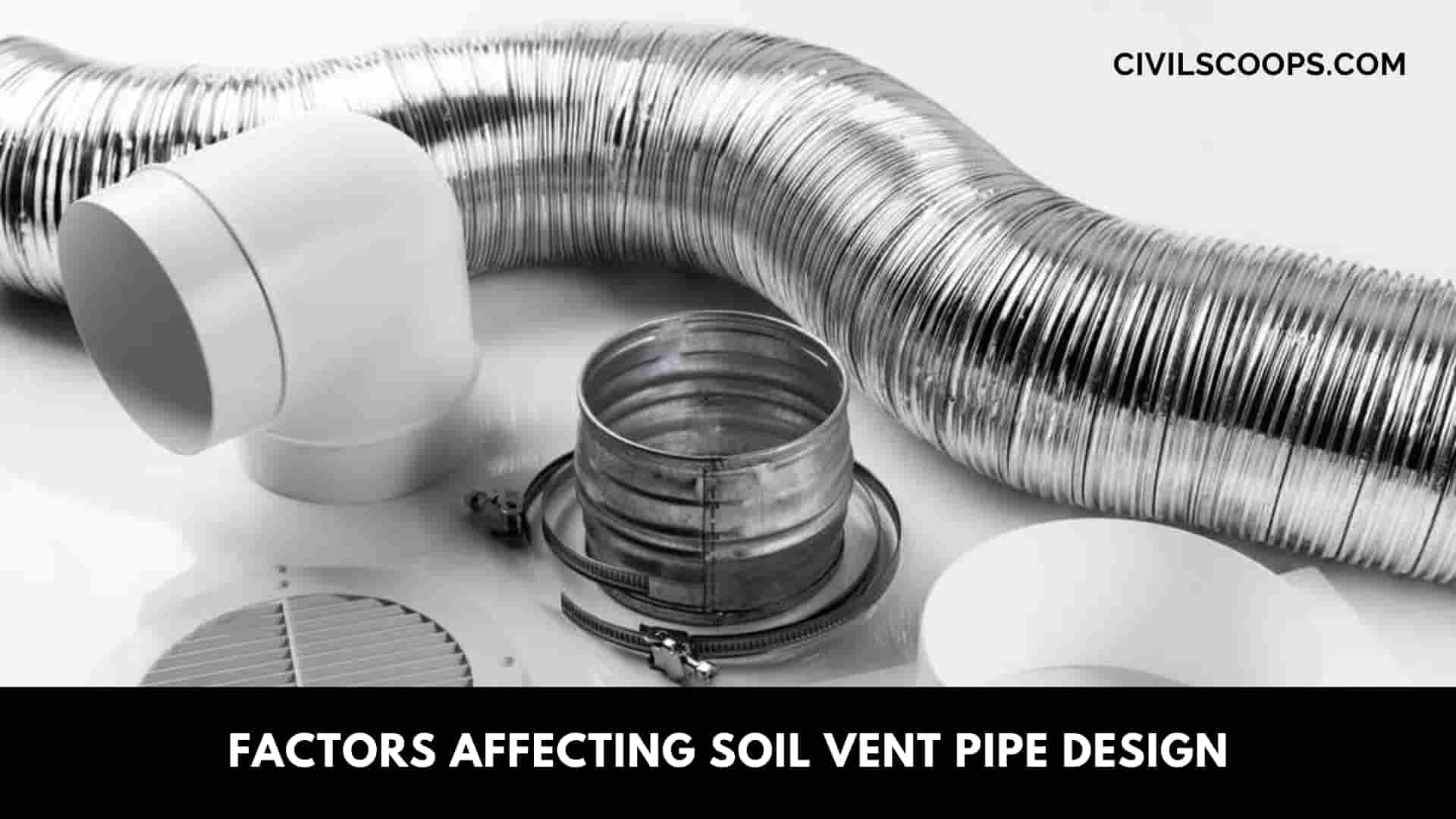
There are some factors which affect the design of the soil vent pipe are as follows
- Economy and the Cost
- Strength and Durability
- Resistance to Abrasion
- Lightweight
1. Economy and the Cost

- To reduce the overall cost of the construction required for the soil vent pipe, the design of the soil vent pipe should be done such that it should cost less amount.
2. Strength and Durability
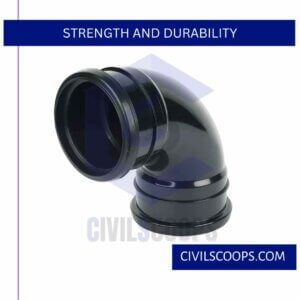
- The soil vent pipe or stack pipe should be durable and have sufficient strength.
3. Resistance to Abrasion

- The soil vent pipe main cause wear and tear due to abrasion.
- The selection of the soil vent pipe should be done such that it should resist to Abrasion.
4. Lightweight

- The Soil vent pipe should be light in weight so that it can be easily transported and handle from one place to another place.
Maintenance of the Sanitary Units and the Pipes in the Plumbing System

The drainage system of the building should be properly maintained and cleaned regularly for its efficient working condition.
Here are some points which we have listed below which you should carefully note
- Entry of the Undesirable Elements
- Flushing
- Inspection
- Quality of the Materials
- Use of the Disinfectants
1. Entry of the Undesirable Elements

- Extreme care and precaution should be taken to avoid the entry of any undesirable elements in the system such as grit, sand, fruits, leaves etc. These elements may block the pipes.
2. Flushing
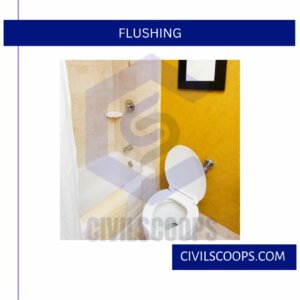
- To maintain the proper drainage system of the house in the efficient working condition, it is recommended to flush it once or twice in a Day.
3. Inspection

- It is necessary that regular inspection of various units of the house drainage system should be done.
- Is there any damage or are obstruction is found it should be replaced and repair immediately.
4. Quality of the Materials
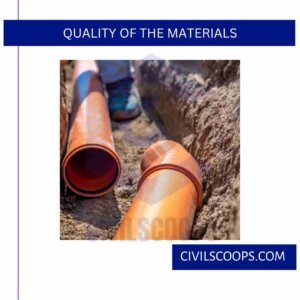
- The materials and the pipes which are used in the plumbing system should be of the best quality.
5. Use of the Disinfectants

- To maintain the good sanitary condition in the building the disinfectants should be used in the laboratory blocks and bathrooms.
[su_box title=”FAQ” style=”default” box_color=”#333333″ title_color=”#FFFFFF” radius=”3″ class=”” id=””]
What Is Soil Vent Pipe?
The soil vent is a pipe that feeds from your sewerage pipes and up to the roof. Its purpose is to allow sewage gasses to vent away from where they can cause harm to people. It also services to equalise the atmospheric pressure inside your drains.
What Is a Soil Stack?
A soil stack is the main vertical pipe on the outside of a house or building and is used to transport the waste from all the other waste pipes in the house or building.
Plumbing Main Stack
The plumbing stack is, essentially, a really big drain that takes in waste from all the other drains in your home be it sinks, toilets, you name it. You’ll rarely hear about plumbing stacks from plumbers because that term refers to the whole long pipe.
Soil Pipe Vent Regulations
Vent pipes shall terminate not less than 6 inches above the roof, measured from the highest point where the vent intersects the roof. EXCEPTION: Where a roof is used for any purpose other than weather protection, vents shall extend at least 7 feet above the roof and shall be properly supported.
Types of Plumbing System
There are three different types of plumbing systems; sanitary drainage, stormwater drainage and potable water. Each of these systems have their own unique functions and purposes. Here is a more in-depth look into how these systems operate.
Types of Plumbing Vents
Definitions
- Branch Vent. A vent connecting one or more individual vents with a vent stack or stack vent.
- Circuit Vent.
- Combination Waste and Vent System.
- Common Vent.
- Individual Vent.
- Stack Vent.
- Stack Venting.
- Vent Stack.
Types of Water Supply Lines
There are five main types of plumbing pipe materials that are still in use today: copper, galvanized steel, polyvinyl chloride (PVC), acrylonitrile butadiene styrene (ABS), and cross-linked polyethylene (PEX).
- PVC Pipes.
- PEX Pipes.
- ABS Pipes.
- Copper Pipes.
- Cast Iron and Galvanized Steel Pipes.
Single Stack Drainage System
Single Stack System
The single stack is based on the hypothesis that the drain lines will support the three constituents of any drainage system: solids, liquids, and air. It moves both soil and wastewater to the drain, as well as producing ventilation. All of the devices attached to the stack need deep seal traps.
Soil Stack Replacement Cost
A: The standard range of a soil stack replacement or repair is usually $1,225 – $2,869.
Water Pipe Maintenance
What do you need to do for proper plumbing pipe maintenance?
- Use drain screens on sinks and drainage systems.
- Don’t flush or drain clogging materials.
- Don’t clean your drainage with toxic cleaners.
- Fix water leaks immediately.
- Check for water pressure regularly.
- Soften hard water to prevent clogs.
Drain Pipe Maintenance
Two to three times a year, flush the drain with baking soda and vinegar. Run hot water down the drain. Pour 1/2 cup of baking soda and 1/2 cup of vinegar with the hot water down the drain. This combo foams up and removes debris, and it also helps kill bacteria and remove odors.
Main Sewer Line Maintenance
7 Tips on How to Maintain Your Sewer Line
- Limit Food Down the Kitchen Drain Line.
- Properly Dispose of Non-Food Items.
- Use One-Ply Toilet Paper.
- Flush the Plumbing System.
- Set Toilets to High Volume Flush.
- Tend to Your Roots.
- Naturally Clean Your Plumbing System.
[/su_box]
[su_note note_color=”#F2F2F2 ” text_color=”#333333″ radius=”3″ class=”” id=””]
Like this post? Share it with your friends!
Suggested Read –
- Top 20 AAC Block Company in India
- All About Sandbag Cofferdam | What Is Sandbag Cofferdam | Advantages of Sandbag Cofferdam
- What Is Hydraulic Cement | Hydraulic Cement Uses | How to Apply Hydraulic Cement | Advantages & Disadvantages of Hydraulic Cement
- Shotcrete Vs Gunite | What Is Gunite | Advantage & Disadvantage of Guniting Process | What Is Shotcrete | Advantage & Disadvantage of Shotcreting
- What Is Bulking of Sand | Bulking of Sand Is Caused Due to | Bulking of Sand Graph | Bulking of Sand Formula | Test Procedure to Determine the Bulking of Sand
[/su_note]
Originally posted 2023-05-04 11:58:35.
